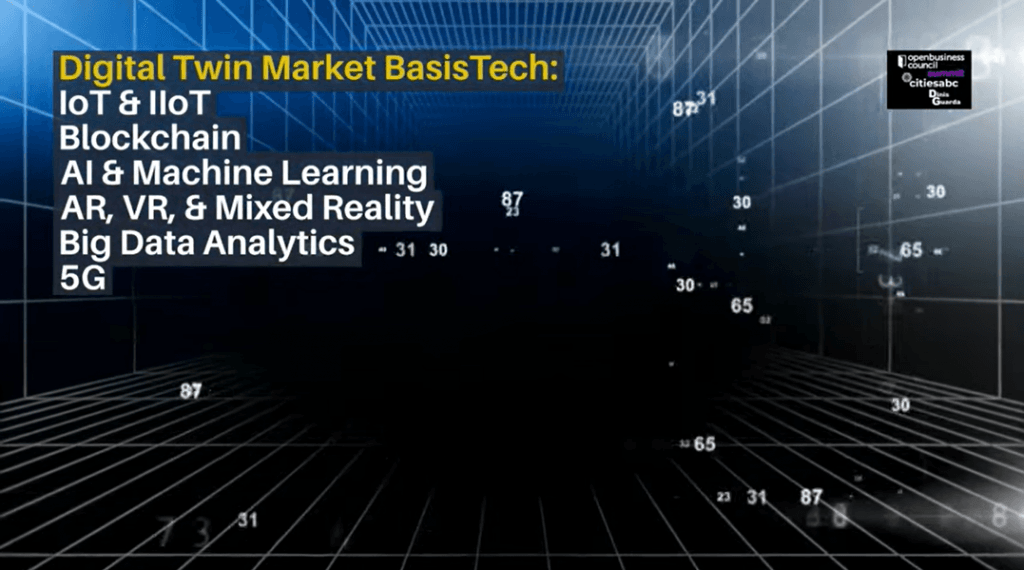A digital twin is the ‘link’ that has brought realism into the Metaverse and various experiences that are even beyond our imagination. It replicates our reality in the virtual world. From virtual fashion and eCommerce stores to boardroom meetings, operation theatres to maintenance workshops, and smart city infrastructures to energy-efficient buildings, digital twins are simulating our real spaces into virtual ones. What poses threat is the personal data leaks and other potential damages that may hinder the growth of this technology. Protection measures and security governance makes it possible to realise the future of a digitised version of physical space.
The world today stands at the conjecture between the real and digital world, ready to welcome the phenomenon called the Metaverse. It is through the blend of the two worlds that humanity is believed to progress to new meaningful heights. A digital twin is an initiative to realise this velocity and provide an entry point to this vast immersive world. This is a secure way to introduce a real-world space that is dimensionally precise into the virtual mirror world of the Metaverse. IBM’s version of a digital twin is “a virtual representation of an object or system that spans its lifecycle, is updated from real-time data, and uses simulation, machine learning, and reasoning to help decision-making”. In other words, it is a virtual model that is designed in such a manner that reflects an object in the physical world. For instance, the data collected from a packaged food manufacturing unit by various sensors (that measure its performance through parameters like efficiency, input, output, etc.) is applied to create its digital copy (or twin). This virtual model operates in a simulated environment to generate valuable insights about its performance.
The digital twin solution on the Metaverse
Real-world is a complex cluster of spatial elements, coordinating with biotic and abiotic components in a dynamic way. A digital twin, thus, mirrors the real world with similar characteristics, processes, integration, and composition, thereby simulating its capabilities. A digital twin in IoT seamlessly integrates with data analytics for a plethora of applications- maintenance prediction and fault detection, smart city technologies, intrusive surgery and diagnostics in medical and healthcare, traffic management, viability and efficiency of manufacturing processes, and fault analysis, to name just a few. Stefano Corazza, head of augmented reality at Adobe says, "We have a very diverse pool of customers, and they are all trying to establish their standard workflow to get to high fidelity digital goods. The one thing they all have in common is the need for the creation of digital twins for all the goods that the brand is representing". A Metaverse version consists of multiple digital twins combined to form a composite digital twin technology.
The digital twin economy
According to a report by Grand View Research, the size of the digital twin market is anticipated to reach $86.09 billion by the year 2028. This growth is majorly driven by the use cases under Industrial Revolution 4.0 (4IR). The increasing demand for Industrial IoT solutions, asset health optimisation (and predictive maintenance), large-scale smart city infrastructure, and energy efficiency (and carbon-neutral economy). For example, Smart cities, alone, are estimated to account for 2 billion sensors and connected infrastructure. This creates an extensive avenue for the development of digital twin technology, creating virtual cities over the Metaverse.
 Urban Digital Twins Set To Create The First Real-world Metaverse
Urban Digital Twins Set To Create The First Real-world Metaverse
The privacy concerns with digital twins
Privacy concerns always surface where there is personal data in the picture. Behavioural assessments, the successful culmination of training programs, and 360 surveys are all examples where data has empowered digital twin technology. Maintaining transparency with scrutinised accessibility is the key to a healthier Metaverse with ‘twin’ versions. Other threatening issues that need to be dealt with are- Intellectual Property theft (hacking of the digital twin blueprint), non-compliance of data, and disrupting the integrity of personal information. A digital twin is two-way communication between the physical and the digital world. This means that traditional methods of security are not enough to keep the systems and data safe. Protective measures for hardware and software need to be stepped up, that are customised based on the nature and scale of the application. In addition, data governance (parameters and policies) ensures the range of privacy levels, strictly based on data management strategy. This dictates the responsibilities during the lifecycle of data- engineering, analytics, and computation. Governance processes like masking, differential privacy, encryption, redaction, and lifecycle management are the avenues to which privacy products can be effectively applied. A holistic approach based on the needs of the digital twin technology and the principles of the business vertical is the key to securing trust and popularity for a better Metaverse experience.
Our Future with Digital Twins
Clearly, the world is witnessing a fundamental upgrade in the existing operating models. The asset-intensive industry is undergoing a digital reinvention that requires the integration of physical and digital systems- processes, equipment, and facilities. Digital twin technology has become a vital part of this realignment, playing a pivotal role in bringing the Metaverse to reality. The devotion of exponential cognitive power to the digital twin technology is carving out its limitless future. With new skill sets and learning capabilities, the technology promises to evolve and generate better and more efficient processes.
"The difference that is taking place now, that hasn't been there in the past, is that we have a platform that obeys the laws of physics and obeys true-to-reality submit scenarios, so it is not just an approximation, it's not just a representation, but it's actually something that is true to reality"
Richard Kerris, Vice President of the Omniverse at NVIDIA. [embed]https://www.youtube.com/watch?v=TlAx0PP2A2I[/embed]